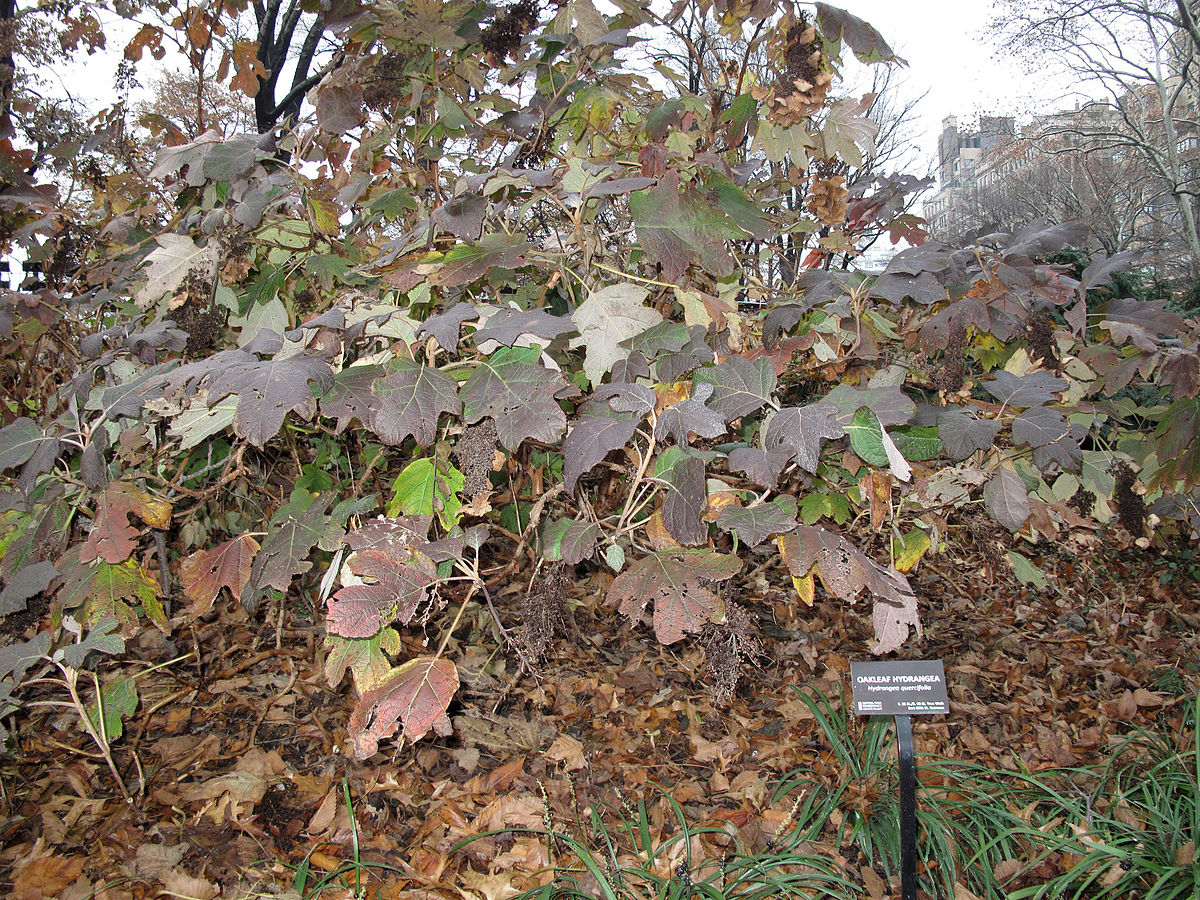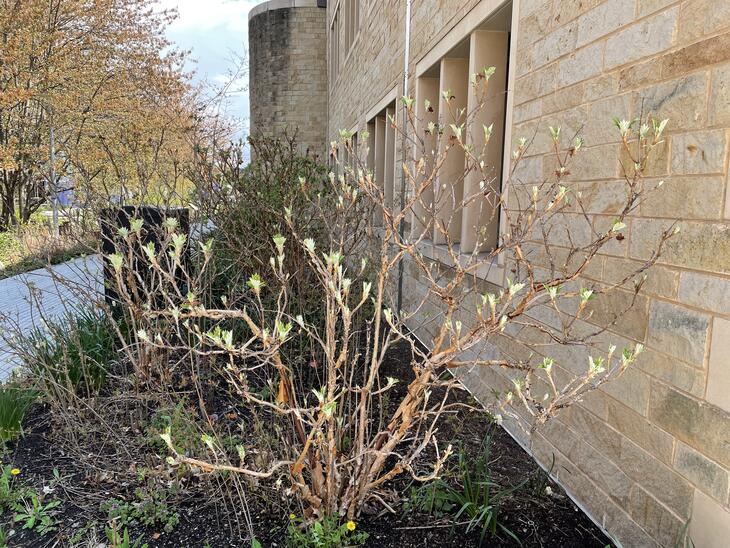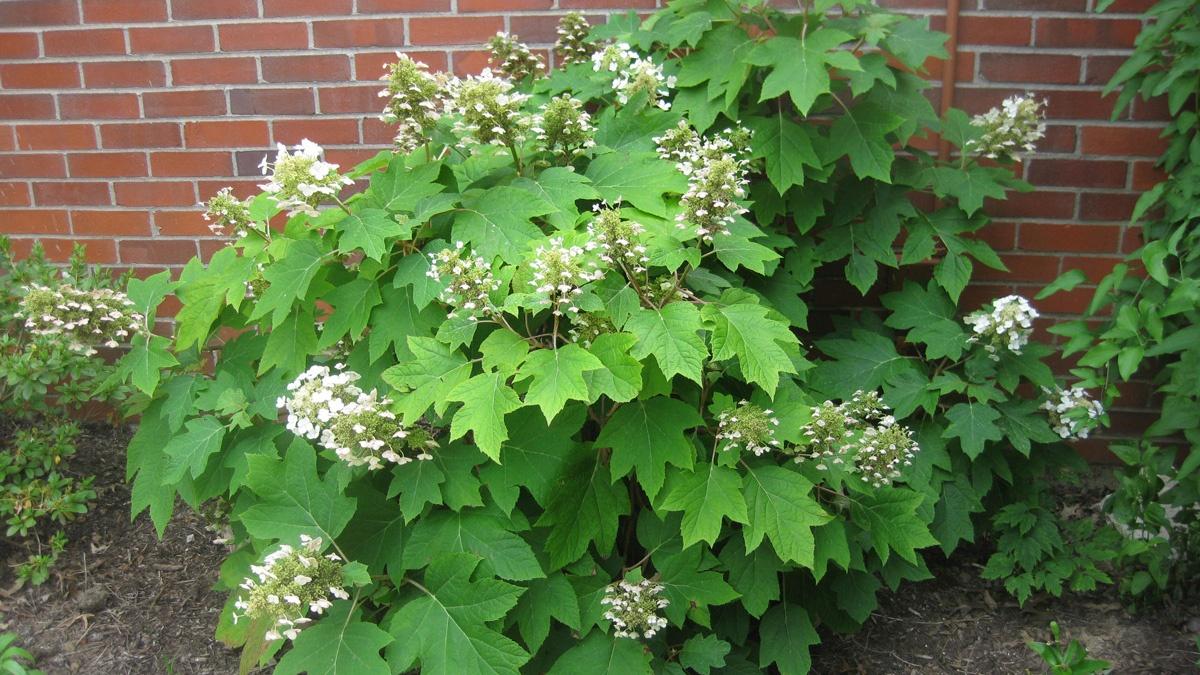Oakleaf Hydrangeas In Winter: How To Keep Your Shrubs Healthy And Thriving
Oakleaf Hydrangeas in Winter: How to Keep Your Shrubs Healthy and Thriving
Oakleaf hydrangeas are a popular choice for gardeners because of their beautiful flowers and lush foliage. However, these shrubs can be susceptible to winter damage if they are not properly cared for.
In this blog post, we will discuss how to keep your oakleaf hydrangeas healthy and thriving during the winter months. We will cover topics such as pruning, mulching, watering, and fertilizing.
Pruning
Pruning is an important part of winter care for oakleaf hydrangeas. It helps to remove dead or damaged branches, and it also encourages new growth.
The best time to prune oakleaf hydrangeas is in the late fall or early winter, when the plant is dormant. You should prune back the branches by about one-third to one-half their length.
Mulching
Mulching around the base of your oakleaf hydrangeas will help to protect them from the cold winter weather. Mulch also helps to retain moisture in the soil, which is important for healthy plant growth.
A good type of mulch for oakleaf hydrangeas is composted yard trimmings. Spread a 2-3 inch layer of mulch around the base of the plant, making sure to leave a 6-inch gap between the mulch and the trunk of the plant.
Watering
Oakleaf hydrangeas need regular watering throughout the winter, especially if the weather is dry. Water deeply once a week, or more often if necessary.
Fertilizing
You can fertilize your oakleaf hydrangeas in the spring and fall. A balanced fertilizer, such as 10-10-10, is a good choice.
Other winter care tips
- Protect your oakleaf hydrangeas from strong winds.
- If you live in an area with heavy snowfall, you may need to tie the branches of your plants together to prevent them from breaking.
- Check your plants regularly for signs of pests or diseases.
Conclusion
By following these tips, you can help to keep your oakleaf hydrangeas healthy and thriving during the winter months. With proper care, these shrubs will reward you with beautiful flowers and lush foliage for many years to come.
Oakleaf hydrangeas are a beautiful addition to any garden, and they can be especially stunning in winter. Their leaves turn a brilliant shade of red or orange, and their bark peels back to reveal a dark layer beneath. If you're thinking about adding an oakleaf hydrangea to your garden, or if you just want to learn more about how to care for them in winter, I recommend visiting .
is a comprehensive resource on all things oakleaf hydrangeas. They have articles on everything from planting and care to winter protection. They also have a forum where you can ask questions and get advice from other oakleaf hydrangea enthusiasts.
I've been visiting for years, and I've always found their information to be accurate and helpful. If you're looking for more information about oakleaf hydrangea winter, I highly recommend checking out their website.
FAQ of oakleaf hydrangea winter
Q: How do I prepare my oakleaf hydrangea for winter?
A: Oakleaf hydrangeas are hardy plants that can withstand cold winters in most climates. However, there are a few things you can do to help them survive the winter months:
- Mulch around the base of the plant with a thick layer of organic material, such as bark chips or pine needles. This will help to insulate the roots and prevent them from freezing.
- Water the plant deeply in the fall, before the first frost. This will help to ensure that the plant has enough moisture to survive the winter.
- If you live in an area with particularly cold winters, you may want to tie the stems of the plant together to prevent them from breaking under the weight of snow.
Q: What should I do if my oakleaf hydrangea freezes?
A: If your oakleaf hydrangea freezes, don't panic! The plant may look dead, but it may still be alive. Here's what you should do:
- Wait until the spring to assess the damage. If the stems are still green, the plant is likely still alive.
- Prune away any dead or damaged stems.
- Water the plant regularly and fertilize it in the spring.
- With a little care, your oakleaf hydrangea should recover from the freeze and bloom again next year.
Q: When should I prune my oakleaf hydrangea?
A: There are two times of year when you can prune oakleaf hydrangeas: in the spring and in the fall.
- Spring pruning is usually done in late March or early April. This is when you will remove any dead or damaged stems from the plant. You can also thin out the plant by removing some of the older stems.
- Fall pruning is usually done in October or November. This is when you will remove any spent flowers and buds from the plant. You can also lightly trim the stems to shape the plant.
Q: How do I propagate oakleaf hydrangeas?
A: Oakleaf hydrangeas can be propagated by cuttings or by division.
- To propagate by cuttings, take 4-6 inch cuttings from the plant in the spring or summer. Dip the cuttings in rooting hormone and plant them in a pot of moist potting mix. Keep the cuttings in a warm, shady location and they should root in a few weeks.
- To propagate by division, dig up a mature plant in the spring or fall. Use a sharp knife to divide the plant into two or three sections. Replant the divisions in a new location.
Q: What are some common pests and diseases of oakleaf hydrangeas?
A: Oakleaf hydrangeas are susceptible to a few pests and diseases, including:
- Aphids: Aphids are small, soft-bodied insects that suck the sap from plants. They can cause the leaves of oakleaf hydrangeas to turn yellow and wilt.
- Scale: Scale insects are small, hard-shelled insects that attach themselves to plants. They can cause the leaves of oakleaf hydrangeas to drop prematurely.
- Leaf spot: Leaf spot is a fungal disease that causes brown or black spots to develop on the leaves of oakleaf hydrangeas.
If you notice any pests or diseases on your oakleaf hydrangeas, you can treat them with insecticidal soap or neem oil. In severe cases, you may need to use a fungicide.
Image of oakleaf hydrangea winter
5 different images of "oakleaf hydrangea winter" from Pinterest:
- Image 1: A close-up of an oakleaf hydrangea's bare branches, with some of the leaves still clinging on. The branches are a deep red color, and the leaves are a pale green.

- Image 2: A full-size image of an oakleaf hydrangea, with its bare branches reaching up to the sky. The branches are a deep red color, and the ground around the plant is covered in a layer of snow.

- Image 3: A group of oakleaf hydrangeas, all in various stages of winter dormancy. Some of the plants have lost all of their leaves, while others still have a few leaves clinging on.

- Image 4: A close-up of an oakleaf hydrangea's buds, which are starting to swell in preparation for spring. The buds are a deep red color, and they are surrounded by a layer of fuzzy hairs.

- Image 5: A winter landscape with an oakleaf hydrangea in the foreground. The hydrangea is covered in snow, and the branches are a deep red color. In the background, there are trees and hills covered in snow.

Post a Comment for "Oakleaf Hydrangeas In Winter: How To Keep Your Shrubs Healthy And Thriving"